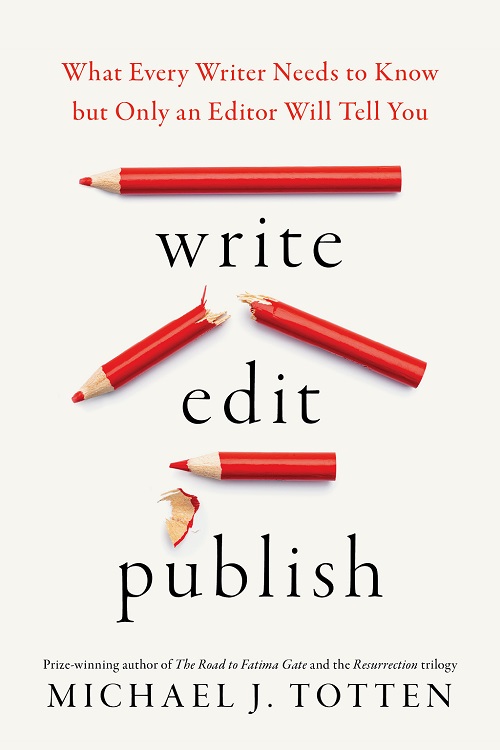Beginning authors often bloat up their stories with scenes that they don’t need and that readers don’t enjoy, a problem that’s usually fatal if it occurs anywhere near the opening chapters. It’s not uncommon, when working as a developmental editor, for me to suggest cutting one or more scenes.
I ask four questions about each scene.
Does the Scene Advance the Plot?
A necessary scene is like a load-bearing Jenga piece. Pull it out, and the whole structure collapses. Obviously you need to keep all of those. (There may be a better way to write a given scene, but that’s a separate question.) You can’t skip the inciting incident, the shocking midpoint reveal in Gone Girl, the scene in The Empire Strikes Back where Luke Skywalker learns that Darth Vader is his father, or the “red wedding” in Game of Thrones. If Emily suddenly won’t return Joe’s phone calls anymore, we first need a scene where she catches him cheating on her, or her behavior won’t make any sense. If Geraldo is rushing to his father’s house at two o’clock in the morning, make sure you’ve written a preceding scene that gives him a reason.
If you can delete a scene without anything bad happening, if the chain of events makes an equal amount of sense with or without it, if readers won’t wonder if they’d missed something if you take it out, then the scene is a candidate for deletion.
Don’t delete it yet, though. Keep reading.
Does the Scene Deepen Character Development?
It’s fine if a scene doesn’t advance the plot as long as it deepens character development or reveals the complexity of relationships between characters. Depending on the kind of story you’re writing, you may want to spend more time or less writing these kinds of scenes. Go ahead and write about that family dinner where everyone pretends grandpa’s memory isn’t failing even if nothing much actually happens.
A thriller will have fewer and shorter scenes dedicated strictly to character development, but you still need to have some as long as they don’t bog down the story. A literary novel will almost certainly have more and longer scenes dedicated strictly to character. Just be careful. Even if it makes sense for you to dedicate most of your pages to these kinds of scenes, you’ll still need to make sure your story has some forward momentum. Things need to happen even if the story is unfolding slowly, and the things that happen need to point to and build toward some kind of climax where everything finally comes to a head.
Not even the most patient readers will allow you to outright bore them. There are literally millions of other books they could be reading right now. Readers of literary novels will give you more runway than avid fans of men’s adventure stories, but you still need to get the plane in the air and go somewhere.
Is the Scene Interesting?
Let’s say you have a scene that doesn’t advance the plot or deepen character development. Odds are good that it feels a bit tedious when you revise your book or reread it before submitting it to an editor or for publication. If so, that’s a strong indication that something is wrong. If a scene doesn’t advance the plot or character development, you truly might not need it at all. Or maybe you need to blip past it with a few sentences of narrative summary rather than dramatizing all of it.
Here’s what I frequently see in manuscripts from beginning authors: Something needs to happen in the logical chain of events to propel the story forward. Maybe two characters need to meet for dinner and hash out an argument, finalize their plans to rob a bank, or figure out what to do now that the bad guys are closing in. Beginning authors are prone to spending paragraph after paragraph narrating these two characters making dinner plans, including the small talk at the beginning and the end of that conversation.
That kind of scene is not interesting. Sure, it’s got dialogue. You could film it or have characters act it out on a stage. And the story can’t advance if these two characters don’t meet for dinner.
If the conversation during dinner is important, by all means, keep it, but I promise you that nobody wants to read three pages about your characters making plans for when and where to meet for dinner. You can replace that kind of scene with one sentence:
Fatima and Fulgencio agreed to meet at Reggie’s diner.
That’s all, you’re done, now get back to the story.
Does the Scene Add?
Maybe you’ve written a scene that doesn’t advance the plot or deepen character development, the kind of thing you can skip entirely or blip past with a single sentence. But you love the scene anyway. Maybe it’s funny or adds some vivid local color to the book’s setting. Perhaps it allows you to show off how much you know about the history of the Byzantine Empire. It might perfectly capture how much crap homicide detectives have to put up with on a day-to-day basis while doing their jobs.
You don’t need the scene. It’s not a Jenga piece that will bring the whole structure down if you yank it. It’s not necessarily even about your main character. You realize that you could delete the scene without a single reader feeling like something is missing. And yet it adds something anyway.
You might want to keep it.
*
If you enjoyed this post, you can read so much more in my book Write, Edit, Publish: What Every Writer Needs to Know but Only an Editor Will Tell You. You can also hire me as a developmental editor, line editor, copy editor, or publishing consultant. Tell me what you’re working on, send me your questions, ask for a free sample edit, or just say hi.


